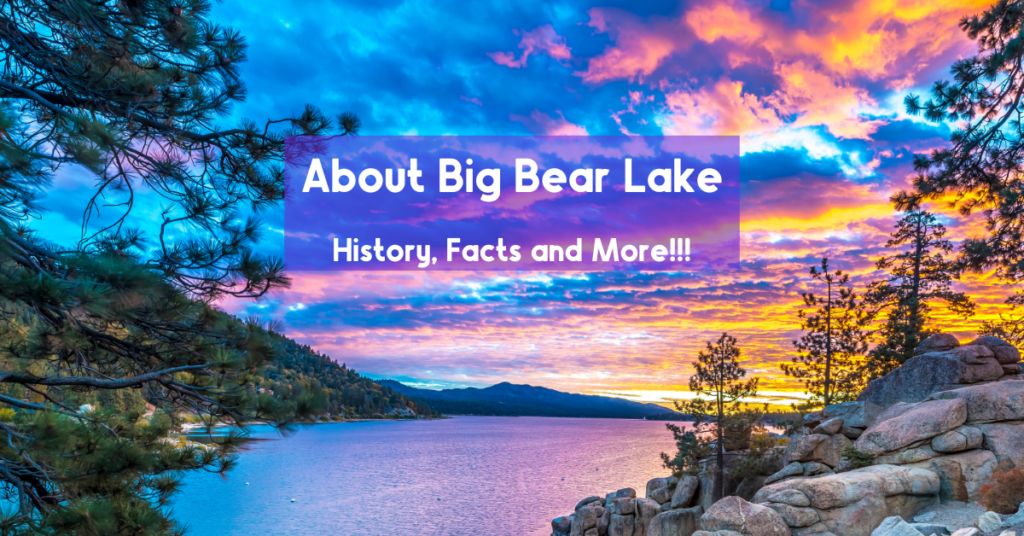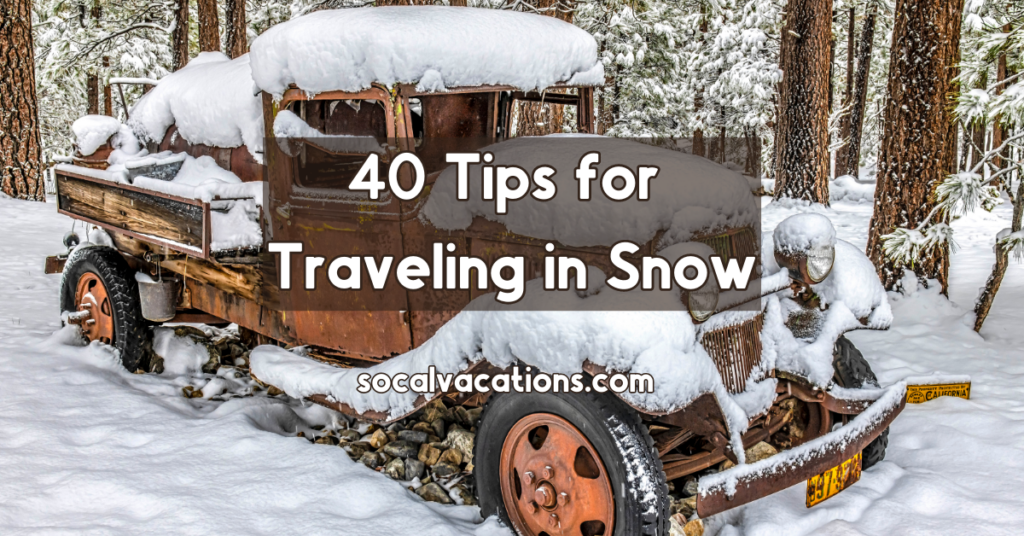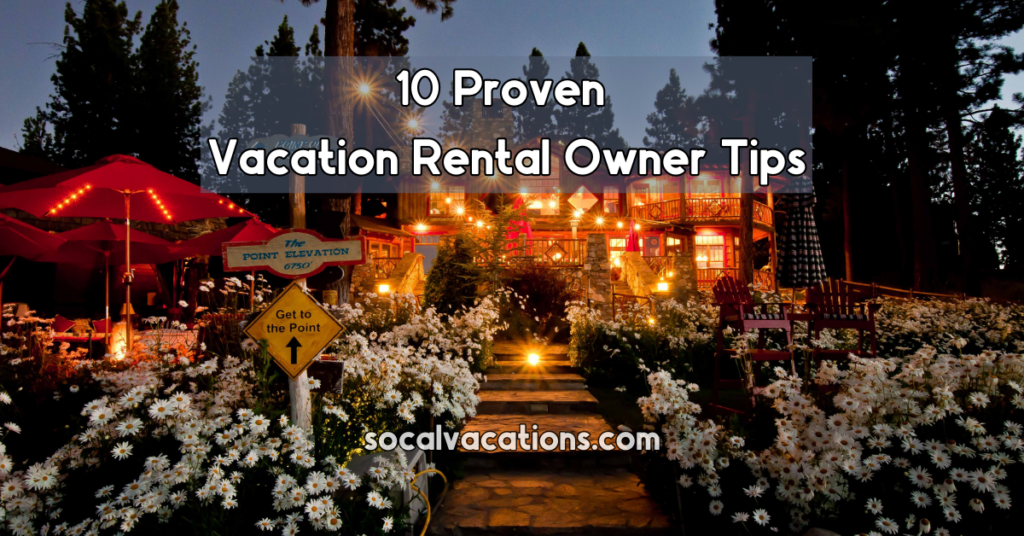Understanding road conditions in Big Bear is crucial for anyone planning to visit this beautiful mountain area, ensuring a safe and enjoyable experience.
The most important rules of thumb to remember:
- Always check the weather before driving in the mountains.
- From November through April… always carry chains or cables.
- If there is inclement weather, don’t travel.
- If you are going up or coming down the mountain and there are people following behind you, use a turnout and let them pass. (If more than 5 vehicles are behind you and you don’t use a turnout, you can be subject to a ticket.)
- If there’s snow… just drive slow.
Navigating Road Conditions in Big Bear
The weather in the mountains can and does change rapidly. These changes affect the road conditions in Big Bear.
There are 3 basic ways to Big Bear:
Road Condition Resources
- Department of Transportation: Check Highways 18, 330 or 38
- SoCal Mountains Road Conditions:
- Caltrans QuickMap: For traffic and road conditions.
- California Highway Patrol Website: For incidents and weather-related conditions.
- Big Bear Visitors Bureau: For road closure and construction updates.
- San Bernardino Sun and Big Bear Grizzly offer local updates.
- Big Bear Road Conditions Facebook Page
- Caltrans Road Condition Hotline: (800) 427-7623 for current conditions.
Best Times to Avoid Traffic
The traffic to and from Big Bear can be overwhelming at times because of how busy it is.
During the holidays and anytime it snows, the traffic will be at its worst.
The best times to avoid traffic are traveling on:
- Weekday mornings.
- Early weekend mornings.
- Travel on weekday mornings to avoid traffic.
Tips for Safe Travel in Big Bear
- Always carry snow chains or cables from October to April, regardless of if you have a 4-wheel drive, all-wheel drive, or 2-wheel drive vehicle. It’s the law and you can face heavy fines for not having them, even if the sun is out and it’s not snowing.
- Install Snow and Mud rated tires for better traction. Note: Even if you have 4-wheel drive, if you don’t have “Snow & Mud” rated tire, you will be required to use chains during inclamate road conditions.
- Check your vehicle’s brakes, battery, and lights before the trip.
- Fill up with gas before entering the mountains.
- Buy your groceries before you come to the mountains. The grocery stores will get out of control with hour-long checkout lines and groceries up here are about 20% more expensive than groceries down the mountain.
- Pack an emergency kit with water, food, blankets, and a first-aid kit.
- Have a physical map as a backup to GPS.
- Inform someone about your travel route and expected arrival time.
- Avoid driving at night in severe weather conditions.
- Practice installing snow chains before your trip.
- Watch for fallen rocks in the roadway, a common hazard.
- Keep a safe following distance, especially on slippery roads.
- Carry a fully charged phone and a car charger.
- Pack warm clothing, extra blankets, extra water, and food.
- Keep a shovel and sand or kitty litter for traction if stuck.
- Be patient and calm in traffic.
- Avoid sudden stops or sharp turns.
FAQs About Road Conditions in Big Bear
-
When are chains required in Big Bear?
From November through April for all vehicles, regardless of drive type, chains or cables must be kept in the vehicle… even if it’s sunny and the roads are clear. It’s the law.
-
What if I don’t have snow tires?
If conditions are R1 or R2, you will be required to install chains or cables, especially if your tires aren’t Snow and Mud rated.
-
Is it safe to drive in Big Bear during a snowstorm?
No, not at all. It’s very risky; you should avoid travel during severe snowstorms unless it’s an absolute emergency.
-
Can I rent snow chains in Big Bear?
No, you need to acquire chains or cables before starting into the mountains.
-
What do I do if my car breaks down?
Move off the road safely, set up emergency signals, and call for help.
-
Are rest stops available on the way to Big Bear?
There are a few, but they’re limited.
-
Is there any place to go sledding on the way to Big Bear?
No, you should never use a turnout to go sledding. It’s extremely dangerous and often causes traffic congestion.
-
What should I do if I get Stuck in a snowstorm?
Stay in your vehicle, use your emergency supplies, and call for assistance. Be prepared to stay in your vehicle for up to 72 hours or longer if you get stuck in a severe snowstorm.
-
Do I need a 4WD vehicle for Big Bear roads?
In the spring, summer, and fall… rarely, if ever. In the winter, it’s highly recommended and not mandatory.
-
How to prepare my vehicle for mountain driving?
Make sure you have a full tank of gas before entering the mountains. Ensure you also have good tire tread, working brakes, and proper fluid levels.
-
What are the risks of driving in the mountains?
Steep roads, sharp turns, bad drivers who don’t use turnouts, and potential wildlife encounters.
-
How often should I check road updates?
Every time before you enter the mountains and before you leave Big Bear to drive down the mountain.
-
How to navigate turns on mountain roads?
Follow the posted speed limits. Slow down before turns and avoid high speeds and sharp maneuvers. And use turnouts if you are going slower than the traffic behind you.
-
Can I get a ticket for going too slow?
Yes, if there are more than 5 vehicles behind you, law enforcement can give you a ticket for not using a turnout.
-
What do I do if I slide on ice?
Stay calm. Gently steer in the direction you want to go. And pray you don’t go over the edge of a cliff.
-
Where’s the best place to install chains or Cables?
Not in the middle of the road. Pull over into a turnout or along the side of the road in a place where you’re not going to impede traffic.
-
Do Cars Ever Get Stranded During Snowstorms in Big Bear?
Yes. Every year, there will be at least 1 snowstorm that will trap 100-200 vehicles on one of the highways coming up to Big Bear. Most of the drivers will have chains and be following all of the rules, but there’s always that 1 guy who messes everything up for everyone else.
-
What are R1, R2, and R3 Road conditions?
In California, the terms R1, R2, and R3 refer to different levels of chain control during winter driving conditions:
R1: Chains are required, except for vehicles with snow tread tires on all four wheels. This is typically the first level of restriction and applies when roads have snow on them.
R2: Chains are required on all vehicles except four-wheel-drive vehicles with snow tires on all four wheels. This level indicates more severe road conditions where standard tires, even with snow tread, may not be sufficient.
R3: Chains are required on all vehicles, with no exceptions. This is the most severe level of chain control, indicating extremely hazardous road conditions where every vehicle must use chains for safety.
These designations are used to ensure driver safety during winter conditions in areas like mountain roads, where snow and ice can create dangerous driving situations. It’s important for you to be aware of these levels and be prepared with the proper equipment when traveling in areas where chain controls might be implemented.
Remember, staying informed about road conditions in Big Bear and being prepared for the unexpected are key to ensuring a safe and enjoyable trip to this beautiful mountain destination. Whether you’re visiting in winter or summer, your adventure in Big Bear awaits, complete with stunning scenery and endless outdoor activities. Stay safe and enjoy your journey







